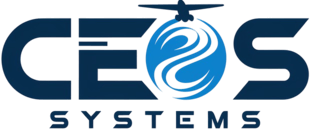The evolution of Boeing’s most successful commercial aircraft family presents a fascinating study in aviation advancement. Let’s explore the key differences between the trusted 737-800 and its modern successor, the 737 MAX, to understand how these aircraft have shaped commercial aviation.
The Boeing 737-800 and 737 MAX represent two distinct generations in Boeing’s commercial aircraft lineup. The 737-800, part of the Next Generation (NG) series from the 1990s, has proven its reliability with over 4,800 deliveries worldwide. The 737 MAX emerged as Boeing’s response to 21st-century demands for fuel efficiency.
| Feature | 737-800 | 737 MAX |
|---|---|---|
| Passenger Capacity (2-class) | 162 passengers | Varies by variant |
| Range | 3,115 nautical miles | 3,550 nautical miles (MAX 8) |
| Fuel Efficiency | Baseline | 14% better than 737-800 |
Design and Technological Advancements
While maintaining the classic 737 silhouette, the MAX introduces significant technological upgrades. The most notable external difference lies in the winglet design – the 737-800’s 8-foot blended winglets contrast with the MAX’s innovative split-tip Advanced Technology winglets, enhancing lift distribution and reducing drag.
Aerodynamic Improvements and Engine Efficiency
- Engine upgrade from CFM56 to LEAP-1B engines
- 16% better fuel efficiency in the MAX
- Larger fan diameter (69.4 inches vs. 61 inches)
- Modified engine placement for ground clearance
- Redesigned tail cone and aerodynamic refinements
Cabin Design and Passenger Comfort
The 737 MAX standardizes the Boeing Sky Interior, offering significant improvements over the 737-800:
- LED lighting with customizable color schemes
- 50% larger pivoting overhead bins
- Improved cabin pressurization (6,000 feet vs. 8,000 feet)
- Slimmer seat profiles for optimized space
- Better-aligned window positioning
Safety Features and Concerns
The safety profiles of these aircraft present a stark contrast. While the 737-800 maintains a strong safety record, the MAX faced unprecedented challenges following two tragic accidents in 2018 and 2019. These incidents led to a worldwide grounding and extensive modifications to ensure safety. Boeing’s decision to modify the existing 737 design rather than develop an entirely new aircraft created engineering challenges, particularly regarding the larger LEAP engines’ impact on aerodynamic characteristics.
Understanding the MCAS System
The Maneuvering Characteristics Augmentation System (MCAS) marks the fundamental safety distinction between the 737-800 and 737 MAX. This automated system, unique to the MAX series, was engineered to prevent stalls by automatically adjusting the aircraft’s nose downward when detecting high angles of attack. In contrast, the 737-800 relies on conventional flight control systems that pilots have mastered over decades.
- MCAS operated using a single angle-of-attack sensor input
- System activated automatically without pilot intervention
- No equivalent system exists in the 737-800
- Lack of proper communication about MCAS to airlines and pilots
- Post-investigation redesign included redundant sensors and limited activation authority
Incidents and Regulatory Actions
| Regulatory Action | Impact |
|---|---|
| Worldwide Grounding | 20-month fleet prohibition following Ethiopian Airlines crash |
| DOJ Investigation | $2.5 billion in fines and compensation for fraud conspiracy |
| 2023 Incident | Alaska Airlines door plug failure leading to MAX 9 grounding |
Operational Performance and Airline Adoption
The operational distinctions between these aircraft significantly impact airline economics. The MAX delivers 14-16% better fuel efficiency than the 737-800, crucial given that fuel comprises 20-30% of operating costs. With the advanced CFM LEAP-1B engines, the MAX extends range capabilities to 3,550 nautical miles, surpassing the 737-800’s 3,115 nautical miles.
- 95% commonality with Next Generation aircraft
- 435 nautical miles additional range
- Over 5,000 MAX orders before first delivery
- Significant reduction in training costs
- Enhanced route possibilities for carriers
Airline Preferences and Fleet Integration
Major carriers have adopted diverse strategies in their fleet decisions. Southwest Airlines has firmly committed to the MAX with 383 orders, projecting $1.2 million annual savings per aircraft compared to the 737-800. Ryanair’s innovative approach includes a custom MAX 8-200 variant, maximizing capacity to 197 seats versus the 737-800’s 189 seats. United Airlines maintains a balanced approach, operating both models to optimize efficiency and risk management.
Comparative Analysis of In-Flight Experience
- 50% larger overhead bin capacity in MAX
- Enhanced cabin pressure control (6,000 feet vs. 8,000 feet)
- 40% reduced external noise footprint
- 4 decibels lower internal cabin noise
- Multi-color LED mood lighting system
- Redesigned sidewall panels for improved spaciousness
Conclusion: Which Aircraft is Better?
| Aspect | 737-800 | 737 MAX |
|---|---|---|
| Fuel Efficiency | Standard efficiency | 14-16% more efficient |
| Operating Costs | Higher fuel costs | $1.8M annual savings per aircraft |
| Track Record | Proven reliability over 20+ years | Recent safety controversies |
| Maintenance | Straightforward, established infrastructure | More complex systems |
The comparison between the Boeing 737-800 and 737 MAX reveals distinct advantages for each aircraft. The MAX showcases significant technological advancement through its CFM LEAP-1B engines, enhanced aerodynamics, and modern avionics systems, delivering substantial operational benefits and environmental improvements.
- Advanced technology and fuel efficiency in the MAX
- Proven reliability and simpler maintenance in the 737-800
- Enhanced environmental performance in the MAX
- Established safety record for the 737-800
- Improved passenger amenities in the MAX
The 737-800’s two decades of reliable service and straightforward maintenance requirements continue to make it an attractive option for airlines prioritizing operational simplicity and proven performance. Meanwhile, the MAX’s efficiency advantages and environmental benefits appeal to carriers facing rising fuel costs and environmental regulations, despite its historical safety concerns.
Ultimately, the “better” aircraft depends on specific airline priorities. While the MAX offers superior technology and efficiency, the 737-800’s proven track record and operational simplicity remain valuable assets. The final choice often balances factors including route requirements, fleet consistency, operational costs, and risk management strategies.
